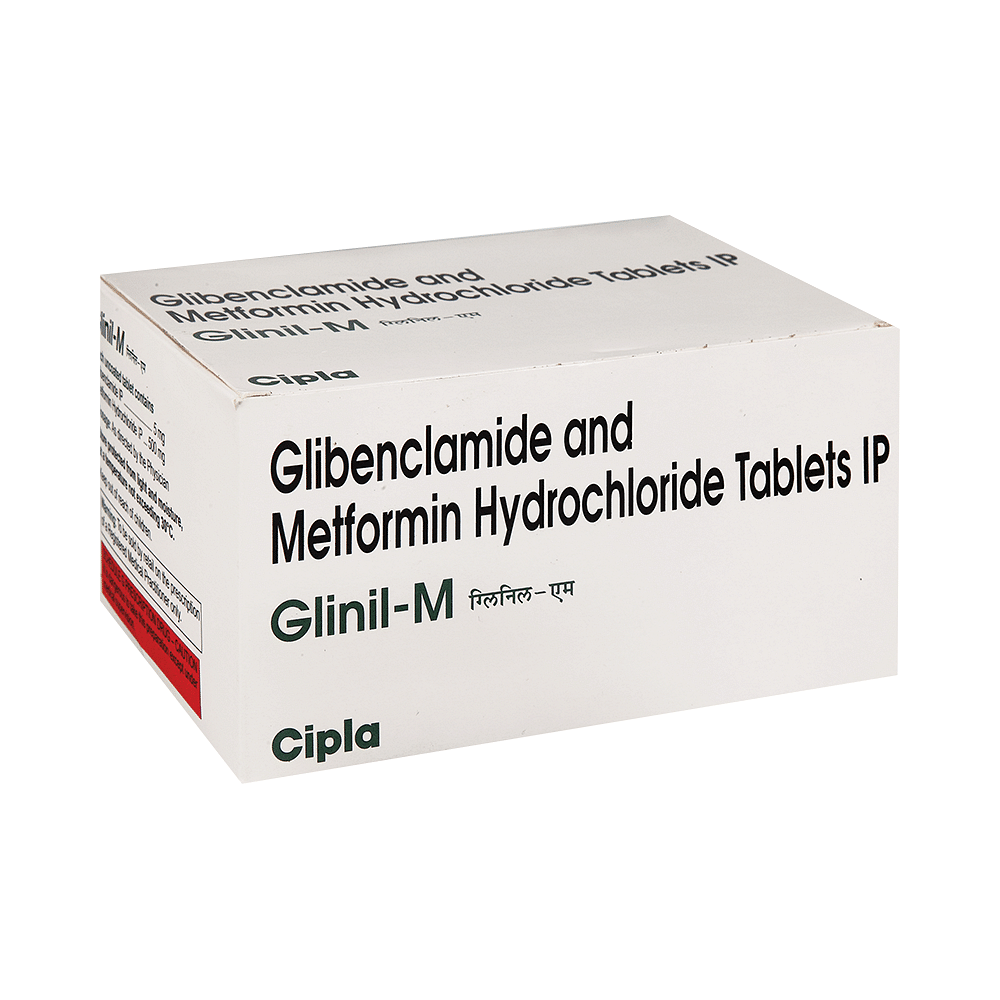
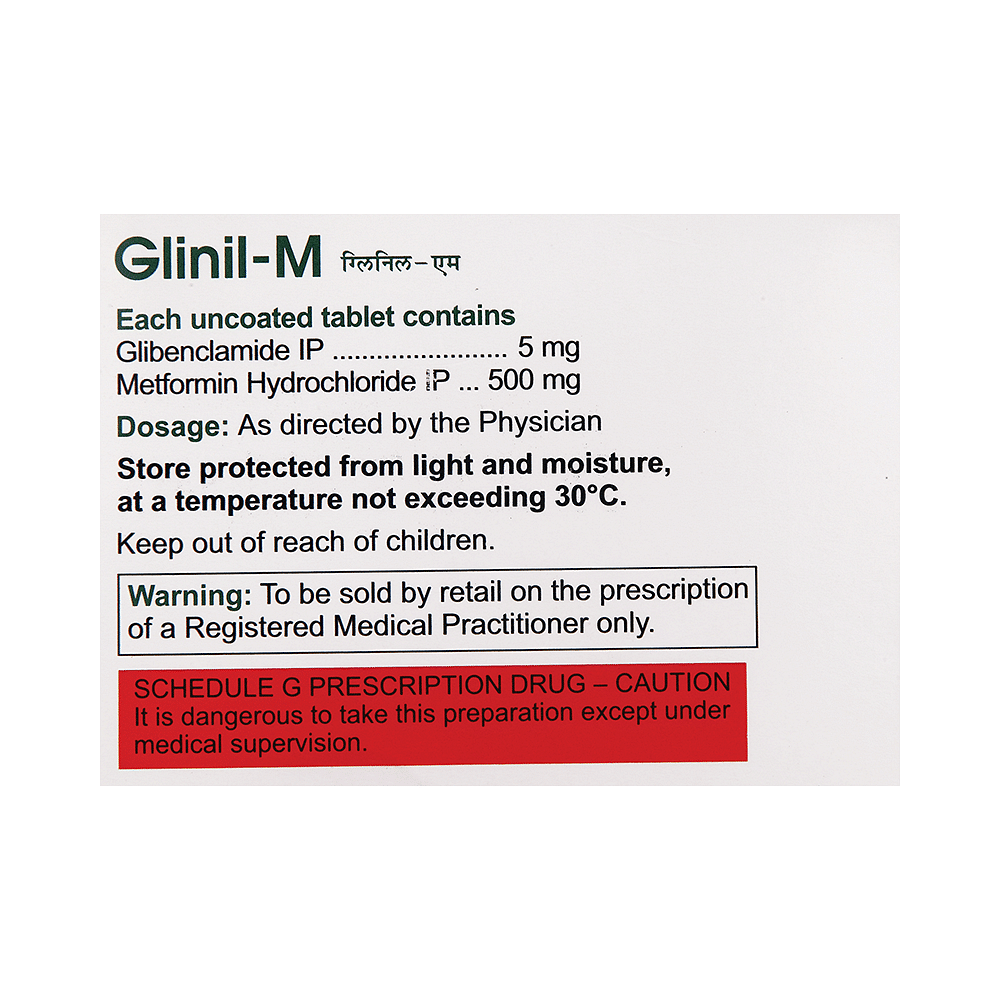
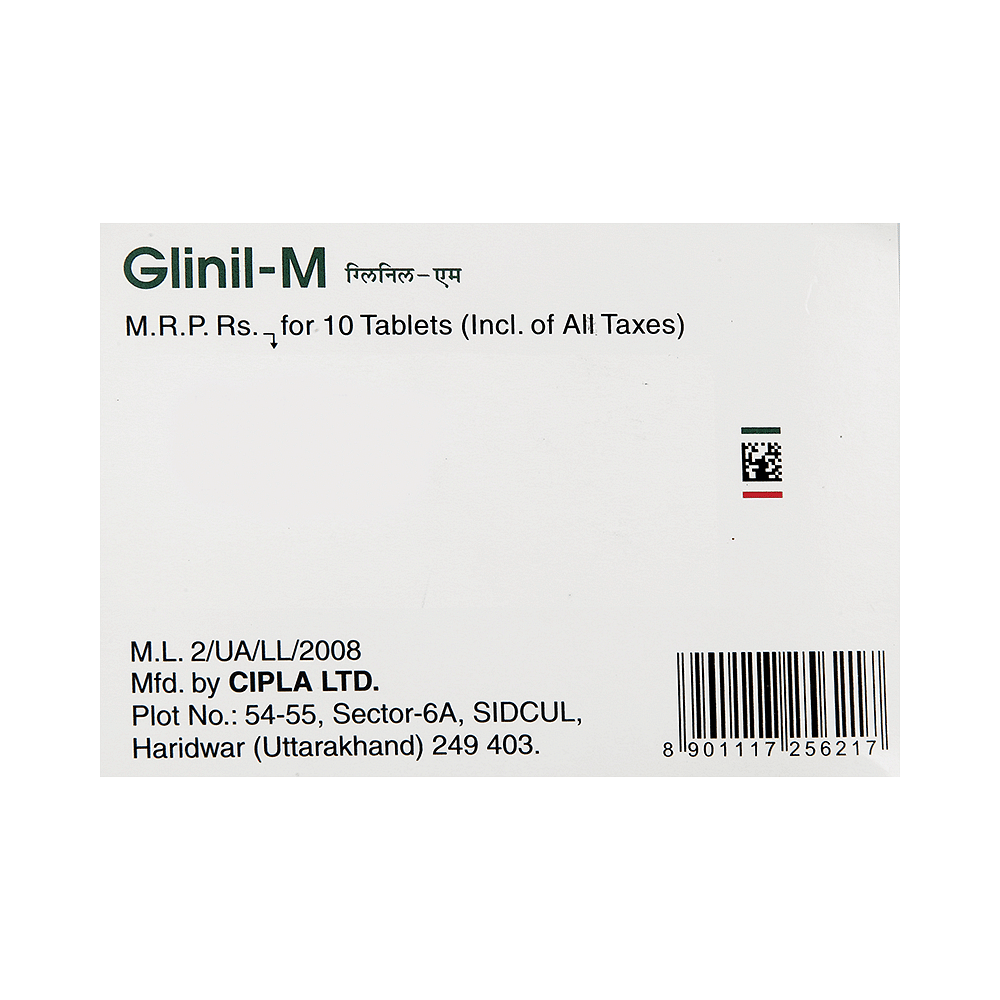
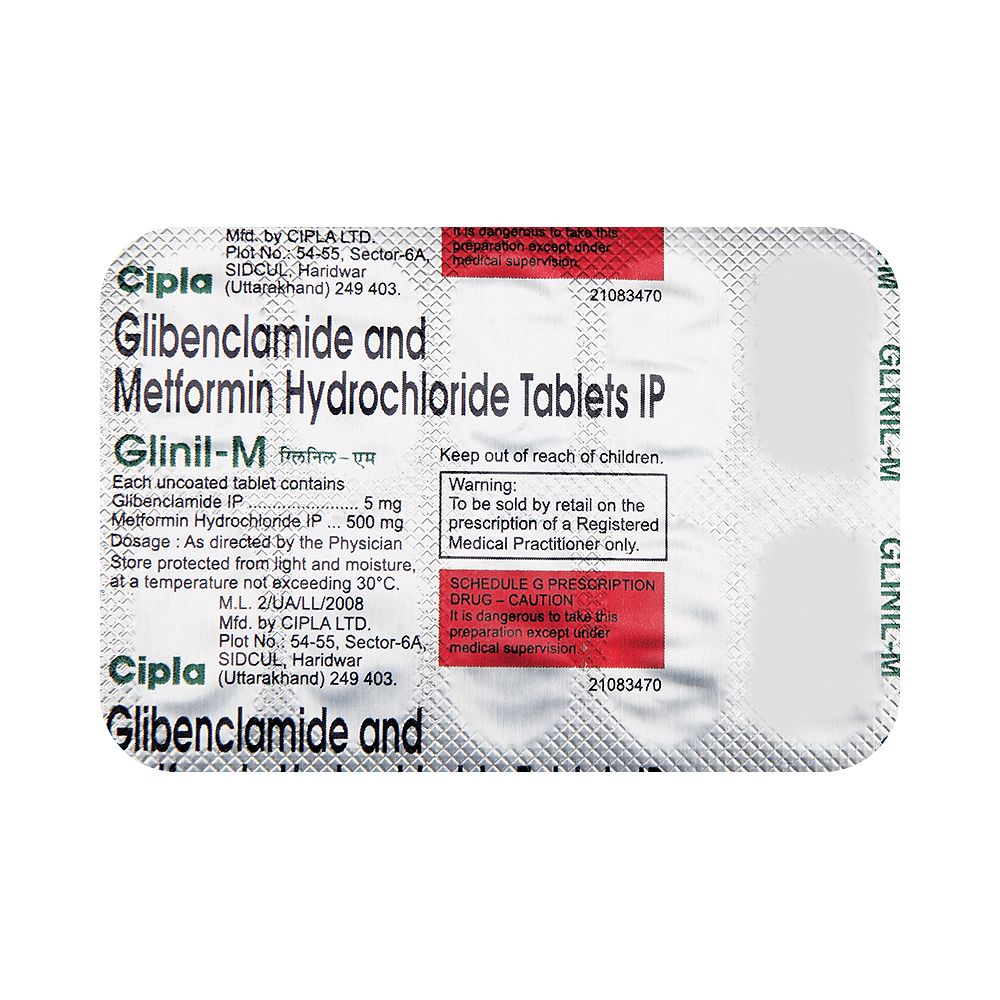
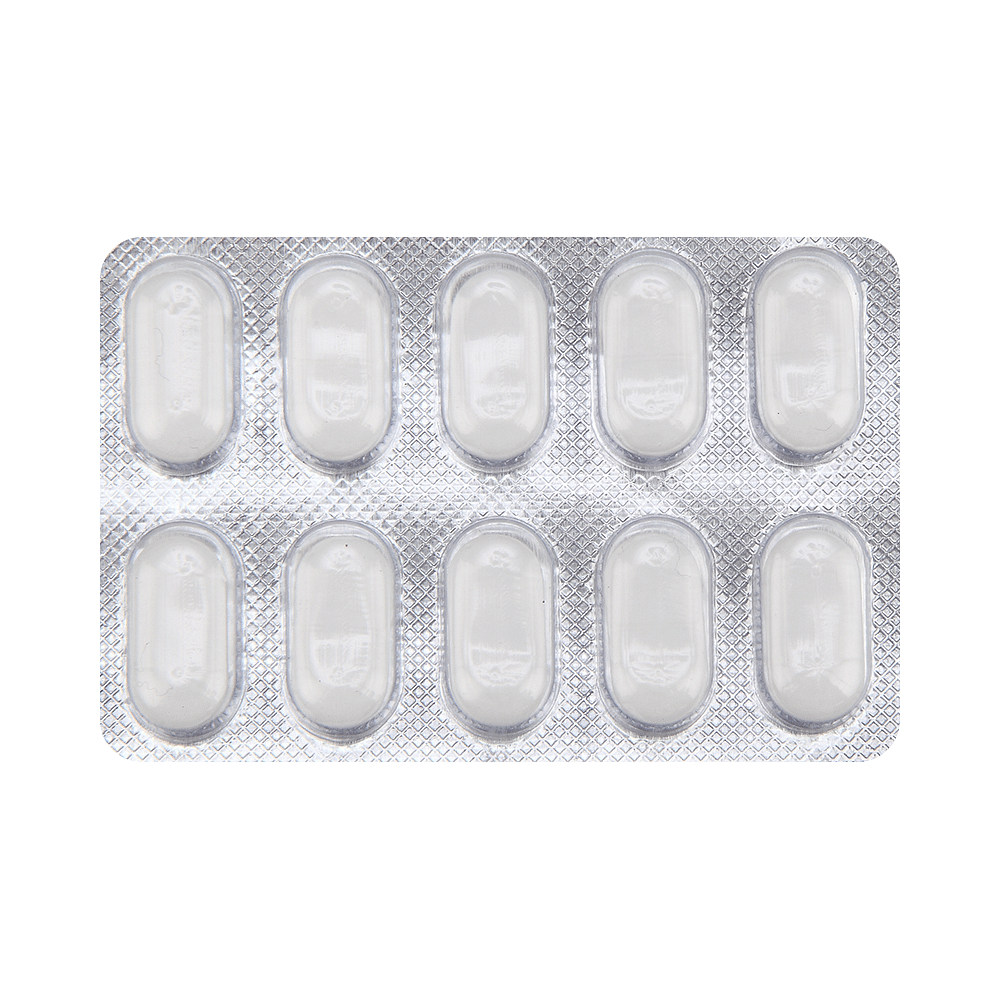
Glinil-M Tablet
Manufacturer
Cipla Ltd
Salt Composition
Glibenclamide (5mg) + Metformin (00mg)
Key Information
Short Description
Glinil-M Tablet is a combination of two medicines used to treat type 2 diabetes mellitus in adults. It helps control blood sugar levels in people with diabetes.
Dosage Form
Tablet
Introduction
Glinil-M Tablet should be taken with food. Take it regularly at the same time each day to get the most benefit. Your doctor will decide what dose is best for you and this may change from time to time according to how it is working according to your blood sugar levels. Keep taking this medicine even if you feel well or your blood sugar levels are controlled. If you stop it without consulting your doctor, your blood sugar levels could rise and put you at risk of kidney damage, blindness, nerve problems and loss of limbs. Remember that it is only part of a treatment program that should also include a healthy diet, regular exercise, and weight reduction as advised by your doctor.
Directions for Use
Take this medicine in the dose and duration as advised by your doctor. Swallow it as a whole. Do not chew, crush or break it. Glinil-M Tablet is to be taken with food.
Safety Information
Side Effects
The most common side effect of Glinil-M Tablet is low blood glucose levels (hypoglycemia). Make sure you recognize the signs of having low blood glucose levels such as sweating, dizziness, headache, and shaking and know how to deal with it.
Alcohol Warning
It is unsafe to consume alcohol with Glinil-M Tablet.
Breastfeeding Warning
Glinil-M Tablet should be used with caution during breastfeeding. Breastfeeding should be held until the treatment of the mother is completed and the drug is eliminated from her body.
Pregnancy Warning
Glinil-M Tablet is generally considered safe to use during pregnancy. Animal studies have shown low or no adverse effects to the developing baby; however, there are limited human studies.
How it works
Glinil-M Tablet is a combination of two antidiabetic medicines: Glibenclamide and Metformin.
Quick Tips
Take it with food to lower your chance of having an upset stomach. It can cause hypoglycemia (low blood sugar level) when used with other antidiabetic medicines, alcohol or if you delay or miss a meal. Inform your doctor about your diabetes treatment if you are due to have surgery under a general anesthetic. Tell your doctor immediately if you experience any deep or rapid breathing or if you have persistent nausea, vomiting, and stomach pain as Glinil-M Tablet may cause a rare but serious condition called lactic acidosis which is an excess of lactic acid in the blood.
Related Medicines
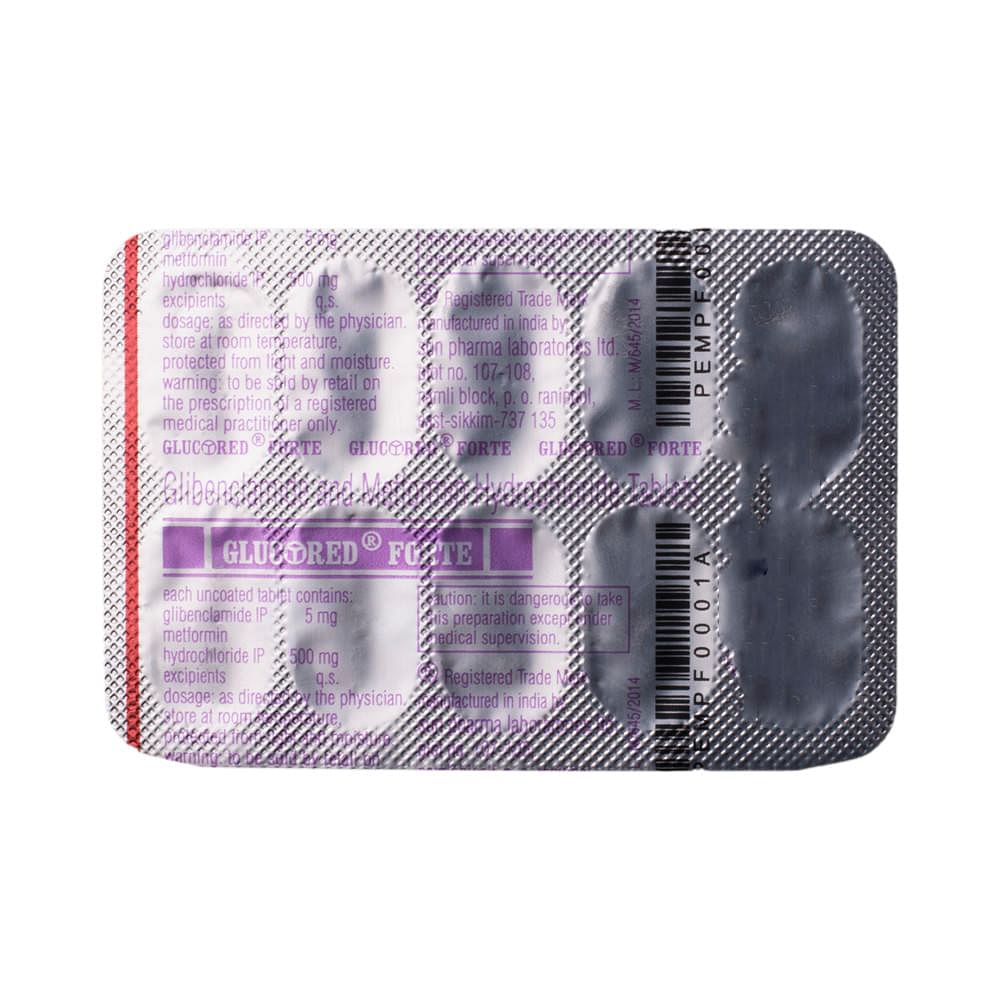
Glucored Forte Tablet
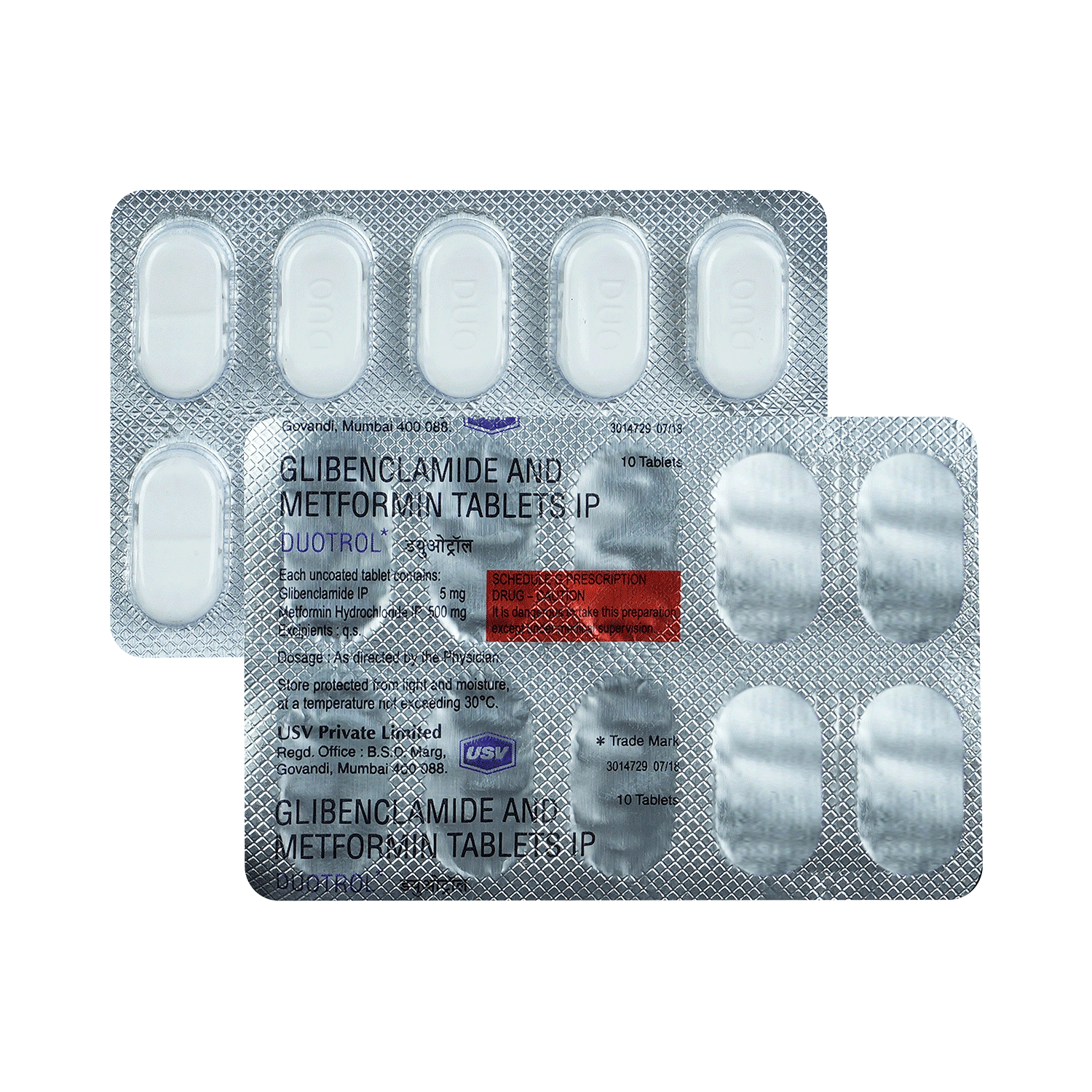
Duotrol Tablet
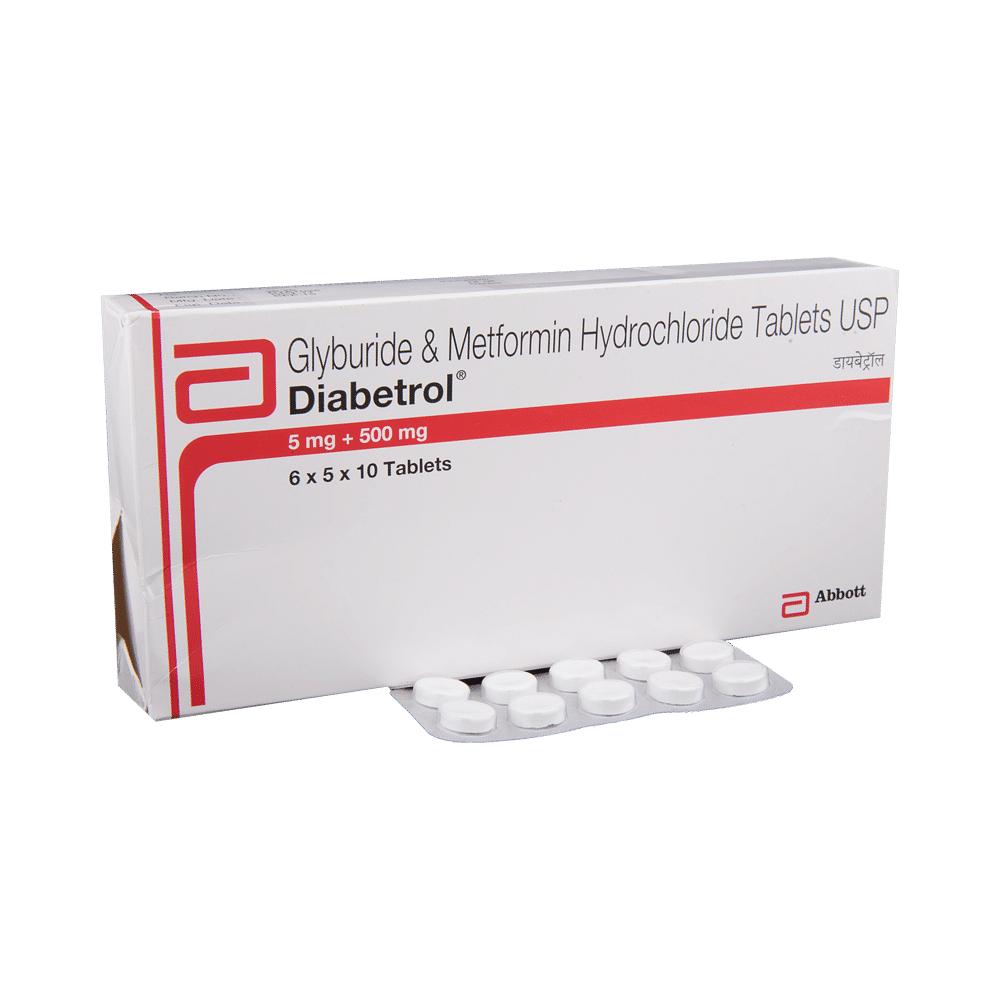
Diabetrol Tablet
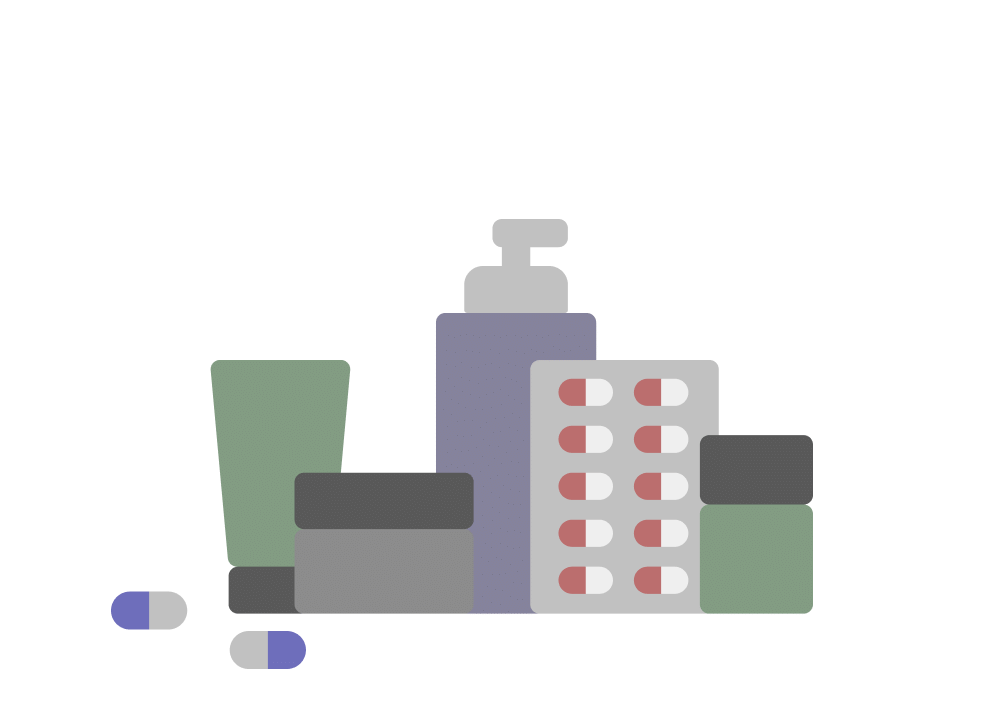
Glucoan Forte 5mg/500mg Tablet

Mofin G Forte Tablet

Benclamet Forte 5mg/500mg Tablet

Glucotrac Plus 5mg/500mg Tablet

Glucotain M 5mg/500mg Tablet

Minoglib-M 5mg/500mg Tablet

Genericart Glibenclamide+Metformin 5mg/500mg Tablet
Frequently asked questions
What is Glinil-M Tablet?
Glinil-M Tablet contains Glibenclamide and Metformin, both of which are used to treat type 2 diabetes mellitus (DM). It helps improve blood glucose levels in adults when taken with a healthy diet and regular exercise. Glibenclamide lowers blood sugar by stimulating insulin release from the pancreas, while Metformin reduces glucose production in the liver and improves insulin sensitivity. This combination is not suitable for treating Type 1 DM.
What is type 2 diabetes?
Type 2 diabetes is the most common form of diabetes. It occurs when the body struggles to produce enough insulin or cannot use it effectively, leading to high blood glucose levels. This causes a range of symptoms including frequent urination, increased thirst, and increased hunger. Untreated, type 2 diabetes can lead to long-term complications like neuropathy (nerve damage), nephropathy (kidney damage), retinopathy (eye damage), foot problems, and an increased risk of cardiovascular disease.
What are the possible side effects of Glinil-M Tablet?
Common side effects of Glinil-M tablet include hypoglycemia (low blood sugar level), altered taste, nausea, stomach pain, diarrhea, headaches, and upper respiratory tract infection. Rare but serious side effects can occur, such as lactic acidosis. Long-term use may also lead to vitamin B12 deficiency.
Can the use of Glinil-M Tablet cause hypoglycemia?
Yes, Glinil-M tablet can cause hypoglycemia (low blood sugar level). Symptoms include nausea, headaches, irritability, hunger, sweating, dizziness, fast heart rate, and feeling anxious or shaky. This is more likely if you miss meals, drink alcohol excessively, engage in strenuous exercise without proper food intake, or take other antidiabetic medications concurrently.
Can the use of Glinil-M Tablet lead to vitamin B12 deficiency?
Yes, long-term use of Glinil-M tablet may cause vitamin B12 deficiency due to interference with its absorption in the stomach. This can lead to anemia and nerve problems. The patient might experience tingling or numbness in hands and feet, weakness, urinary problems, altered mental status, and difficulty maintaining balance (ataxia). To minimize this risk, some researchers recommend a regular intake of vitamin B12 supplements every year.
Are there any specific conditions in which Glinil-M Tablet should not be taken?
Glinil-M tablet must not be used by patients with known allergies to any of its components or excipients. It is also contraindicated for individuals with moderate to severe kidney disease and those with underlying metabolic acidosis, including diabetic ketoacidosis.
Is it safe to take alcohol while I am also taking Glinil-M Tablet?
No, combining Glinil-M tablet with alcohol is not recommended. It can lead to a significant decrease in blood sugar levels (hypoglycemia), potentially increasing the risk of lactic acidosis.
What are the instructions for storage and disposal of Glinil-M Tablet?
Store this medication in its original container or packaging, tightly sealed. Refer to the label provided on the pack or box for specific storage instructions. Dispose of unused medication properly and ensure it is inaccessible to children, pets, or other individuals.


